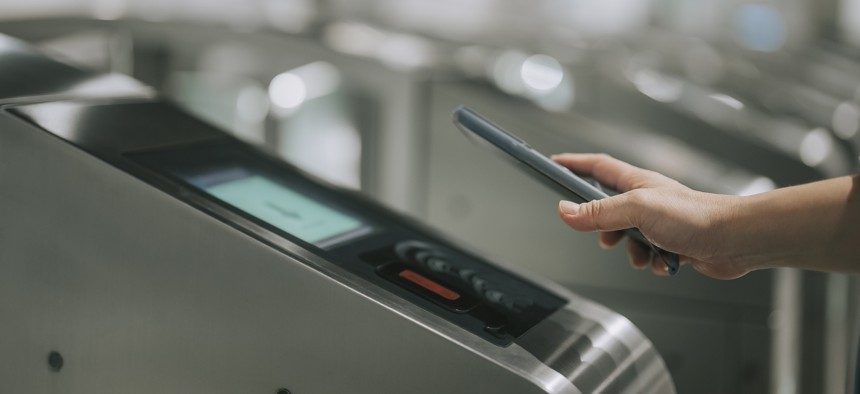Caltrans serves up dashboard, metrics for local transit agencies

Edwin Tan/Getty Images
An interactive dashboard designed to track implementation of contactless fare payments helped local California transit agencies see where they could make travel simpler and more cost-effective.
To track public transit ridership and contactless payments, a dashboard is “best suited” for the job, California’s Department of Transportation said.
A December report analyzes Caltrans’ 2021 California Integrated Travel Project (Cal-ITP), which piloted contactless fare payment systems at four local transit agencies over six months. The program featured payment acceptance devices that read and validated riders’ contactless bank cards and smartphones, fare calculation and processing software as well as data dashboards and visualizations to help officials gauge the success of contactless payment systems.
Previously, there was no centralized system for public transit providers to collect or access data on fares or passenger and vehicle data.
Cal-ITP used the open-source data tool Metabase to build a dashboard that tracked a host of ridership and cost metrics and assessed the success of contactless payments. Measures included number of rides per week, median ride duration, total revenue per day and number of riders per month based on contactless payments. The data can guide transportation officials’ efforts to increase contactless fare technology and public transit ridership, the study said. It also provides insights on riders’ use of fare discounts and adjustments.
Officials reported that the Cal-ITP’s dashboard saved time and provided resources to create data-driven goals such as performance benchmarks. The project’s universal dashboard and standardized metrics were “particularly important” for smaller agencies with limited resources to collect and analyze data themselves, the study said.
The interactive dashboard allowed officials to filter by agency and timeframe or download raw data, which the study said increased the data’s value to agencies. As a result, they can determine which metrics are most useful to them now and which metrics CAL-ITP may need to include in the future, the study said, as well as “glean additional agency insights beyond contactless payments.” For example, if data shows which day of the week is busiest for the transit provider, officials can plan to increase service for those times.
Cal-ITP implemented contactless fare payment pilot programs at four public transit providers—Montery-Salinas Transit, Santa Barbara County’s Clean Air Express, Santa Barbara Metropolitan Transit District and Sacramento Regional Transit—from late 2021 to spring 2022.
“Through these projects, transit agencies and Cal-ITP identified metrics to assess the progress and success of the demonstrations via interactive dashboards and data visualizations that show accessible summary statistics,” the study said. “These dashboards and visualizations provide insights from the data that are valuable to transit agencies and to Cal-ITP for future implementations.”






